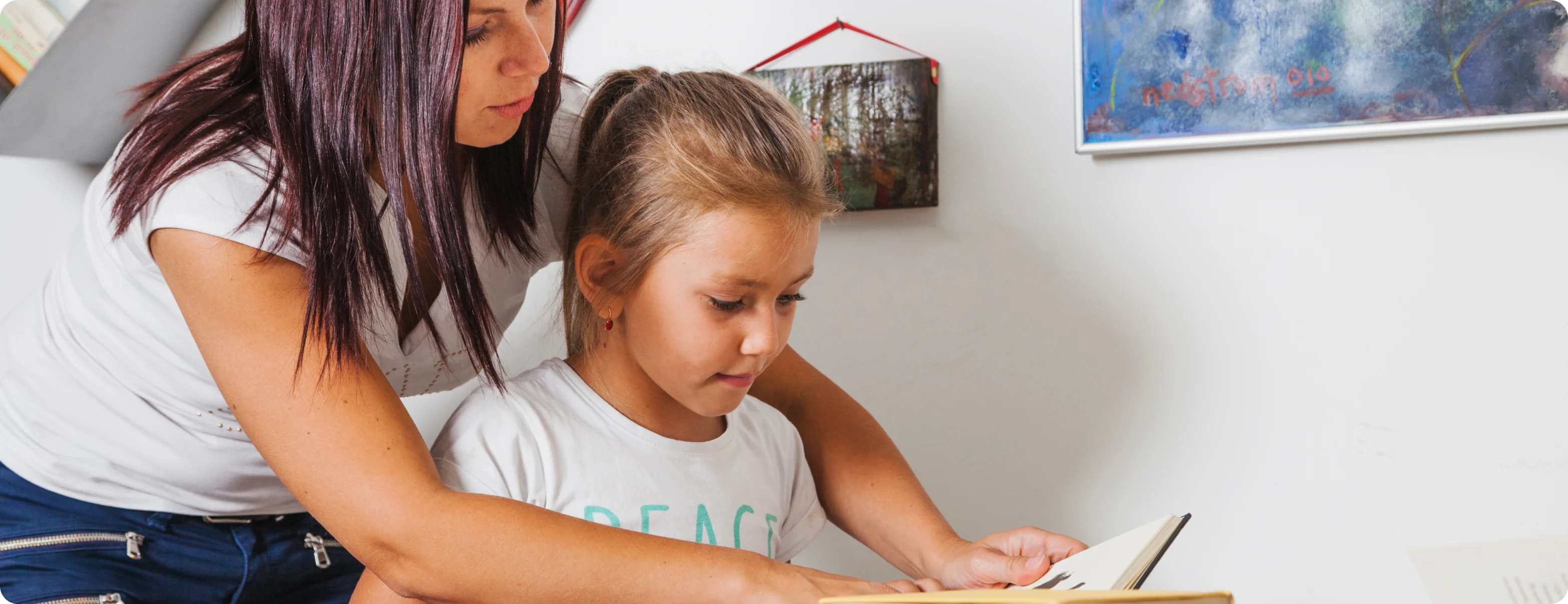The BEST Strategy for Helping your Struggling Reader at Home

Stephanie Tsapakis
|
Published on May 2, 2023 · 6 min read


Stephanie Tsapakis
|
Published on May 2, 2023 · 6 min read

Watching your child struggle is heartbreaking. There is no sugarcoating it. Parents often share with us how they have tried to help their child at home, but simply did not have all of the knowledge and specialized skills they needed.
It is completely unreasonable to expect parents to be able to be EVERYTHING for their child. Just like you wouldn't expect yourself to learn to be an endocrinologist if your child had a metobolic issue like diabetes, you shouldn't expect yourself to also be able to provide intervention for their struggles with reading and/or spelling.
First and foremost, it's important to understand that dyslexia is a complex disorder that requires personalized and structured interventions.
"A systematic, multisensory, phonics-based approach that includes explicit instruction, practice, and feedback is the most effective way to teach children with dyslexia to read."
The most important part of these systematic instructional programs is understanding the six syllable types. Once you are able to recognize syllable types, you are better equipped to attack and sound-out unfamiliar words.In this blog, we will delve deep into the six syllable types and explain why they are crucial for reading success.
The six syllable types of English are closed, open, vowel-consonant-e, r-controlled, vowel teams, and consonant-le. Each syllable type has a specific pattern that helps readers decode words more easily. By understanding these patterns, children can develop word attack skills and become more confident readers. If parents can help explain the different syllable types, it will greatly help your child with their word attack skills.
Closed syllables are the most basic type of syllable and consist of a consonant followed by a short vowel. Examples: cat, bath, in, ditch, shun
Open syllables, on the other hand, end with a vowel and have a long vowel sound. Examples: hi, we, she, go
Vowel-consonant-e syllables consist of a vowel, a consonant, and a silent "e" at the end. Examples: bite, cake, froze
R-controlled syllables are those that have a vowel followed by the letter "r", which changes the sound of the vowel. Examples: car, horn, bird
Vowel-Team Syllables are two vowels, or sometimes a combination of a vowel and a consonant that create a single sound. Examples: snow, coin, trout
Finally, consonant-le syllables are those that end with a consonant followed by "le". Examples: table, purple, tickle
Understanding the six syllable types of English is essential for teaching children to read. When students are taught to break words down into syllables, they are better able to decode unfamiliar words. For example, if a child knows the closed syllable pattern, they can decode words like "cat", "hat", and "sat" more easily. Additionally, they can decode where to break up words with multiple syllables such as "Atlantic", "invent", or "purchase".
Parents can help their struggling readers at home by learning about the six syllable types and how to divide syllables when reading. When reading with their child, parents can point out the syllables in a word and help their child decode the word using the appropriate syllable type. This will improve their child's word attack skills and increase their confidence in reading.
We know this is not an easy task, and it definitely does not require you to be perfect at syllable division and all the rules. However, it is a great starting point for parents wanting to provide a little extra support at home. Of course, working with a certified dyslexia specialist, such as the teachers at LD Expert, is the most effective way to help your child that struggles with reading and/or spelling.
Looking for personalized support for your child's learning journey?
Our tutoring and dyslexia intervention services are tailored to students with learning differences. Whether it's reading, writing, or other challenges, our team offers one-on-one guidance.
Start with a consultation!Stay updated with our latest blog posts.
Cart